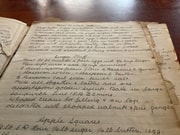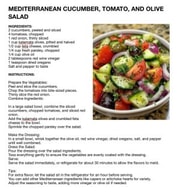Question 1: In the periodic table, what is the symbol for the element Mercury?
Question 2: Which author wrote the famous novel "1984"?
"1984" was published in 1949 by English author George Orwell. It is a dystopian social science fiction novel and cautionary tale which presents an imagined future, where society is tyrannized by The Party and its totalitarian ideology. The book has become a classic literary example of political and dystopian fiction.
Question 3: Who is credited with the invention of the World Wide Web?
Sir Tim Berners-Lee, a British scientist, invented the World Wide Web in 1989 while working at CERN. The web was originally conceived and developed to meet the demand for automatic information-sharing between scientists in universities and institutes around the world.
Question 4: What is the term for a technique of growing plants without soil, using mineral nutrient solutions in a water solvent?
Hydroponics is a type of horticulture and a subset of hydroculture, which is a method of growing plants, usually crops, without soil, by using mineral nutrient solutions in an aqueous solvent. This allows for precise control of the nutritional balance the plants receive.
Question 5: In what year did the Titanic sink on its maiden voyage?
RMS Titanic struck an iceberg on April 14, 1912, and sank in the early hours of April 15, 1912. The ship was on its way from Southampton to New York City. Over 1,500 passengers and crew lost their lives in the disaster. The sinking of the Titanic is one of the deadliest maritime disasters in history during peacetime and led to significant changes in maritime regulations.
Question 6: In Australian folklore, what is the mythical creature known for terrorizing humans and sneaking up on them in the bush?
Originating from Aboriginal folklore, the Bunyip is a mythical creature said to inhabit swamps, billabongs, and other waterways. Its appearance varies depending on the stories, often described as having a dog-like face, tusks, and a powerful tail. The Bunyip has played an important role in Aboriginal culture and remains a popular figure in modern Australian folklore.
Question 7: Where did the English word "ketchup" originate from?
The word "ketchup" comes from the Hokkien Chinese word "kê-tsiap", which refers to a fermented fish sauce. It was brought to Malaysia and Singapore, where English colonists first encountered it. The early English recipes called for ingredients like mushrooms, walnuts, oysters and anchovies.
Question 8: Who is considered the "Bard of Avon"?
William Shakespeare, often referred to as the "Bard of Avon," is acclaimed as one of the greatest playwrights in history. His works, including plays like "Hamlet," "Romeo and Juliet," and "Macbeth," have had a profound influence on English literature and drama.
Question 9: Which country was the first to put an artificial satellite into orbit?
The Soviet Union launched Sputnik 1, the world's first artificial satellite, on October 4, 1957. This marked the start of the space age and the U.S.-U.S.S.R space race.
Question 10: When did the Great Barrier Reef gain UNESCO World Heritage status?
The Great Barrier Reef, which is the largest coral reef system in the world and located in Queensland, Australia, was added to the UNESCO World Heritage list on October 26, 1981, recognized for its outstanding universal value.






The symbol for Mercury is Hg, which comes from the element's Latin name, hydrargyrum, meaning "liquid silver". Mercury is the only metallic element that is liquid at standard conditions for temperature and pressure.